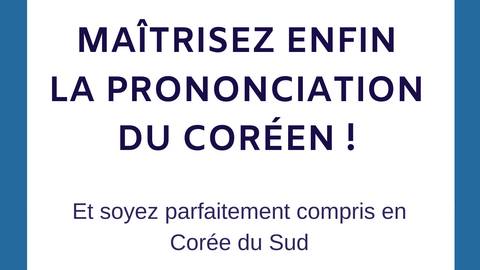Cours de coréen ᚛ Level 2 - Korean for Beginners #1 (Lessons 31 to 60) ᚛ Leçon 57 - The honorific style in Korean
The honorific style in Korean
What is the honorific style in Korean?
We have seen, throughout the different chapters, that Koreans use several speech levels depending on who they are addressing. We have also seen that the three most-used styles are the casual, polite, and formal styles. If this is confusing, I invite you to reread the course on the subject, since we will complicate that system in this new chapter.
While the styles we've studied vary according to the person WHOM one is addressing, the honorific style varies according to the person ABOUT WHOM one speaks. Using the honorific style says "I feel respect for the person I'm speaking about".
The honorific style is actually combined with three styles (casual, polite, and formal) that we've studied before since they are used in different circumstances.
Situations :
-
I'm speaking about another friend of mine with my best friend: I use the casual style since I'm speaking to my best friend, and I don't use the honorific style since I'm speaking about someone for whom I don't have to show a lot of deference.
-
I'm speaking about my boss with my best friend: I use the casual style since I'm speaking to my best friend, but I can combine it with the honorific style since I'm speaking about my boss, towards whom I must express respect.
-
I'm speaking to a salesperson about my best friend: I use the polite style since I'm speaking to a salesperson, and I don't use the honorific style since I'm speaking about my best friend.
-
I'm speaking to a salesperson about my parents: I use the polite style since I'm speaking to a salesperson, and I can combine that with the honorific style since I'm speaking about my parents, towards whom I must express respect.
In addition, it's normal to combine the polite or formal style with the honorific style when you're speaking about your listener him/herself, in order to show him/her respect.
Situation :
- I'm speaking with a salesperson about him/herself: I use the polite style since I'm speaking to a salesperson, and I also use the honorific style to show him/her respect.
When is the honorific style used in Korean?
Generally, the honorific style is used when you are speaking about someone to whom you owe respect, generally according to Korean social codes, depending on age or social hierarchy.
Here is a non-exhaustive list of the uses of the honorific style:
- When you are speaking about a senior manager
- When you are speaking about parents or family members who are from an older generation than the person to whom you are speaking
- When you are speaking about the person you are talking with, who is a stranger or who you don't know well (seller, server, colleague you don't work closely with)
The honorific style generally isn't used:
- When one is speaking about a friend
- When we are speaking about someone who is of no particular importance to us or to the person we're speaking with
The honorific style serves to honor the person you are speaking about. It could be a faux pas not to use the honorific style when speaking about the mother of the person you are speaking with, for example. That would suggest that you don't respect her.
However, you can make the deliberate choice not to honor someone. For example, if your boss gets on your nerves and you are speaking about him to your friend, you generally won't show any particular respect. Honoring a person or not remains your personal choice, but it is advisable to do so in the situations described above.
Creation of honorific verbs in infinitive form
The honorific style appears in Korean with the suffix -(으)시다, which is attached to the stem of verbs.
To transform a verb into its honorific form, we proceed in the following manner:
- If the stem ends in a vowel, the honorific verb is [Stem]시다
- If the stem ends in a consonant, the honorific verb is [Stem]으시다
The verb 가다 (= to go) has 가 which ends in a vowel, for its stem. The honorific verb for 가다 is therefore 가시다.
The verb 받다 (= to receive) has 받, which ends in a consonant, for its stem. The honorific verb for 받다 is therefore 받으시다.
Exceptions in the formation of honorific verbs
The stem ends in ㄹ
For verbs with a stem ending in ㄹ, the honorific verb is obtained in the following manner:
Drop the final ㄹ from the stem, then add 시다 conforming to the normal rule for constructing honorific verbs.
The verb 살다 (= to live) has 살, which ends in ㄹ, for its stem. First we drop the final ㄹ from the stem, obtaining 사. Then we add 시다. So, 살다 has 사시다 for its honorific form.
The verb 팔다 (= to sell) has 팔, which ends in ㄹ, for its stem. First we drop the final ㄹ from the stem, obtaining 파. Then we add 시다. So, the honorific form of 팔다 is 파시다.
The stem ends in ㅂ
For irregular verbs with a stem ending in ㅂ, the honorific verb is obtained in the following manner:
Drop the final ㅂ from the stem, then add 우시다
The irregular verb 돕다 (= to help) has 돕, which ends in ㅂ, for its stem. First we drop the final ㅂ from the stem, obtaining 도. Then we add 우시다. So, 돕다 has 도우시다 for its honorific form.
The irregular verb 무섭다 (= to be frightening) has 무섭, which ends in ㅂ, for its stem. First, we drop the final ㅂ from the stem, obtaining 무서. Then we add 우시다. So, the honorific form of 무섭다 is 무서우시다.
The stem ends in ㄷ
En savoir +
The stem ends in ㅅ
En savoir +
The stem ends in ㅎ
En savoir +
Special honorific verbs
Certain verbs have a special dedicated honorific form. In these cases, the normal form with -(으)시다 which we obtain with the stem of the verb isn’t generally used.
En savoir +
Honorific vocabulary
Some common nouns also have an honorific form which it is necessary to use when the nouns concern a person towards whom you must show respect.
En savoir +
Summary table of structure
En savoir +
Exercises
En savoir +
N'est-il pas frustrant d'arriver en Corée du Sud pour se rendre compte qu'aucun Coréen n'arrive à nous comprendre ? En effet, peu importe notre niveau en coréen, la prononciation du coréen est la réelle clef pour pouvoir profiter à 100% d'échanges avec les Coréens natifs.
Cependant, force est de constater que les mécanismes physiques au niveau de la bouche (langue, dents, palais, gorge) ainsi que les mécanismes linguistiques (nasalisation, palatalisation, renforcement, assimilation, expiration... etc) ne sont jamais enseignés dans les livres ou simplement survolés.
Maitrîsez enfin la prononciation du coréen est la formation vidéo indispensable pour toute personne souhaitant communiquer en coréen sans se voir demander de répéter chaque phrase dû à une mauvaise prononciation !
En savoir +

